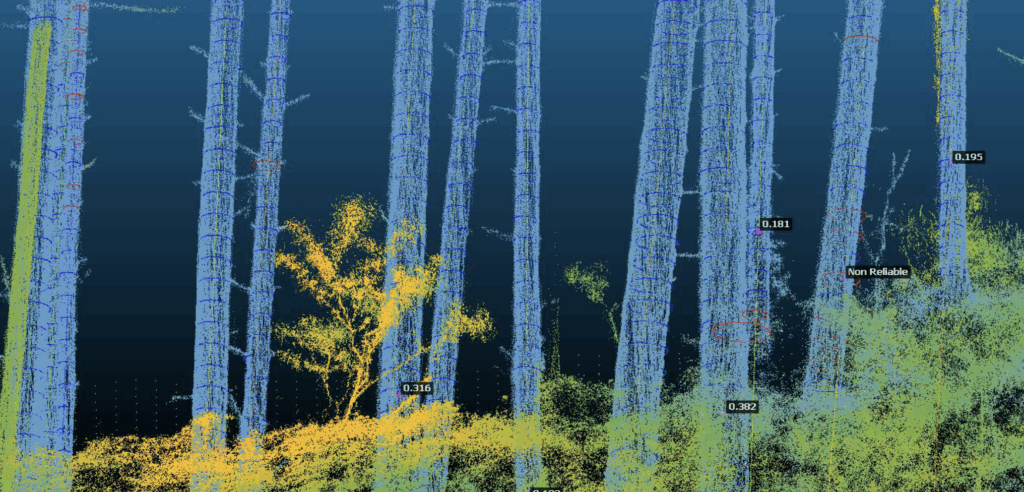Research shows terrestrial laser scanning (TLS) can accurately estimate timber value and carbon content in woodlands enabling smarter woodland management and improved carbon accounting

This new report, written by Bangor University’s Heddwyn Bye on behalf of Woodknowledge Wales, was produced as part of the Welsh Government–funded Home-Grown Homes project. It explores how terrestrial laser scanning (TLS) can be used to estimate both timber value and carbon content in Welsh woodlands, offering fresh insights into smarter woodland management and carbon accounting.
Conventional methods for assessing standing timber are limited by the difficulty of measuring tree form. As a result, much of the UK’s hardwood ends up as firewood, with only a small proportion entering higher-value, long-life uses such as construction. By contrast, TLS uses ground-based LiDAR to capture detailed 3D images of trees, enabling precise measurement of diameter, height, sweep, taper, lean and branch incidence. These measurements can then be linked to timber grading and carbon estimates.
Using terrestrial laser scanning (TLS)
The study, carried out across eight Welsh woodland sites of varying complexity, found strong agreement between TLS and traditional manual measurements. Using a sawlog selection algorithm, TLS data could predict both timber product outputs and the carbon content of sawlogs before harvest. This offers a route to unlocking greater value from underused woodlands, while also improving the accuracy of carbon stock assessments.
Although promising, TLS still faces practical barriers to widespread adoption. The scanners are sensitive to weather, data processing requires specialist expertise, and survey costs remain higher than conventional inventories. Automation of data handling and more affordable equipment will be essential for integration into day-to-day forest management.
Transforming timber valuation in Wales
If these challenges are addressed, TLS could transform timber valuation in Wales by helping woodland owners better understand the economic and environmental value of their forests. This would support the wider use of UK-grown timber in construction and contribute to net-zero goals.
